#polystichum munitum
Explore tagged Tumblr posts
Text










Native planter box update: oops! all palmate coltsfoot edition
#pnw native plants#native plants#petasites frigidus#cornus canadensis#geum macrophyllum#polystichum munitum#tellima grandiflora
66 notes
·
View notes
Text
tis bloomin’ + unfurlin’ season
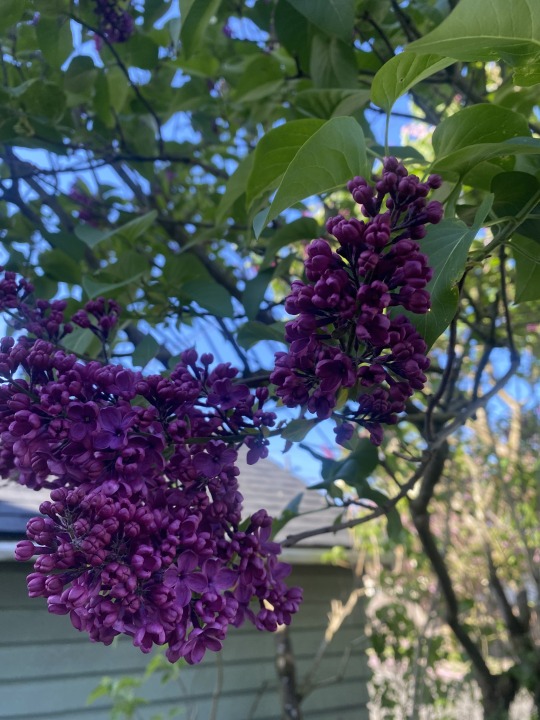
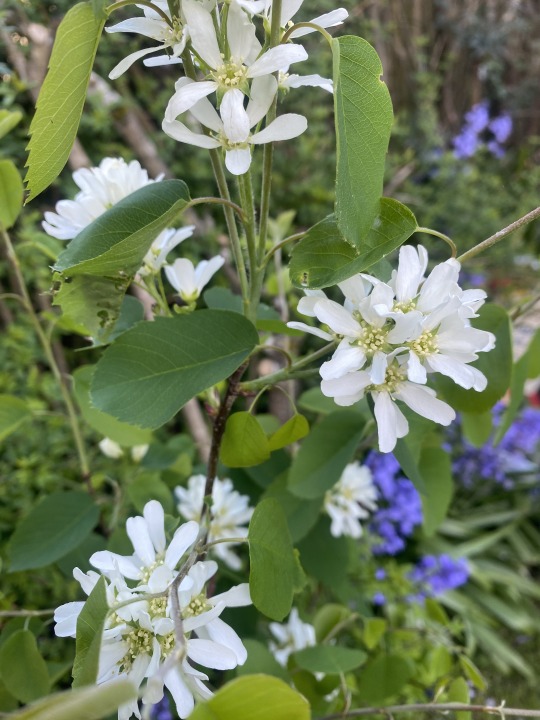



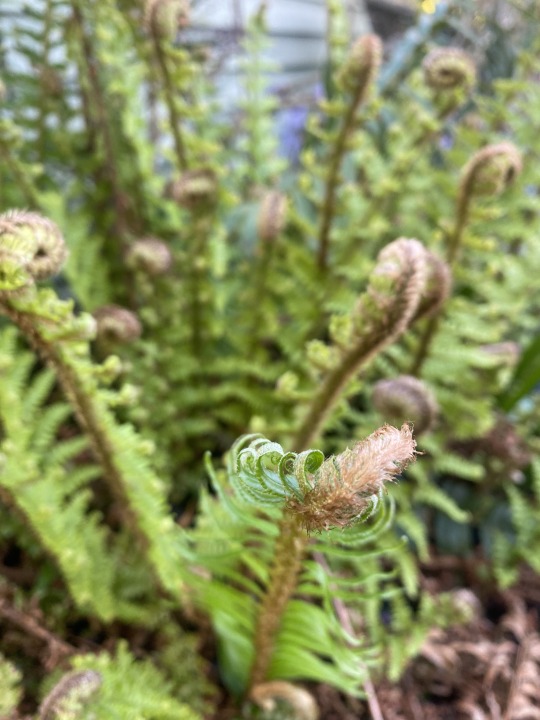
#lilac#serviceberry#robust male fern (fuzzy edges)#blooming cherry#sword fern (i think?!!)#not sure which variety of lilac we have possibly agincourt beauty?#gift from my parents when mr fsc + i were first married#there are SO MANY ferns in our area#spring is springing!#urban nature#personal#foxy takes pics#syringa vulgaris#amelanchier#polystichum munitum
11 notes
·
View notes
Text
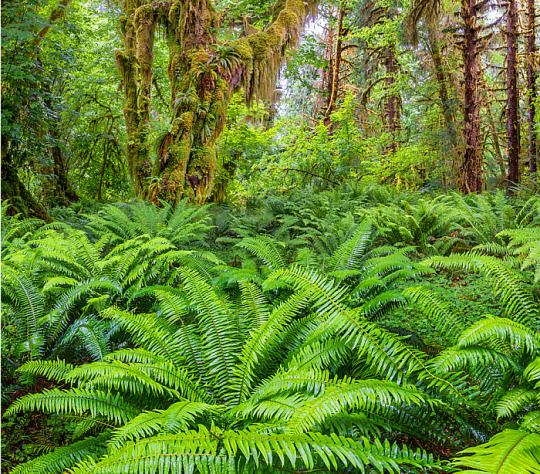
Western sword fern (Polystichum munitum) and Big leaf maple (Acer macrophyllum), Olympic National Park
Photo by Jack Dykinga
#Polystichum munitum#Polystichum#Acer macrophyllum#acer#fern#wester sword fern#sword fern#plants#green#green ferns#botanical#olympic national park#forest#woods#nature
6 notes
·
View notes
Text

Polystichum munitum, 1928 Karl Blossfeldt
195 notes
·
View notes
Text


Week two of the botanical illustration class I'm taking. We worked with more ferns, particularly lady fern (Athyrium filix-femina), though I pulled out one of last week's little sword ferns (Polystichum munitum). We also had some Douglas fir (Pseudotsuga menziesii), so I made a little arrangement. Once again I challenged myself to focus more on details rather than a looser, more impressionistic style, so this sketch took me about two hours. You can see the difference between the angle I was seeing the specimens from, and the angle I took the photo from.
#botanical illustration#botany#plants#native plants#ferns#conifers#trees#nature#artwork#sketches#traditional art#naturalist#illustration#not AI generated
51 notes
·
View notes
Text
In the UK, Polystichum munitum or the Sword Fern was given the Award of Garden Merit by the Royal Horticultural Society, the UK's leading garden charity which was founded in 1804 (assuming the internet isn't lying to me). To get this award, the fern had to undergo trials and be judged against its peers by a group of experts on that specific type of plants. So ferns, I'd assume. Trial grounds according to the RHS website:

This award is usually given for the plant being hardy and suited to the weather conditions but I mean. It's also just neat because apparently if you rub the sorus (i should prolly be saying coenosorus but eh) on inflamed skin it makes it go away. Here's a picture of a sword fern before I even attempt to explain coenosoruses (is that a word or is coenosorus already implicitly plural because of what it is???)

#plant facts and factoids#i'll talk actual science tomorrow i think#officially recognized cool plant
3 notes
·
View notes
Text
kinda fucked up imo that there are Polystichums in this state besides munitum
2 notes
·
View notes
Text
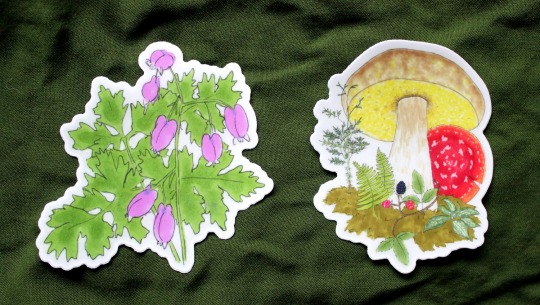
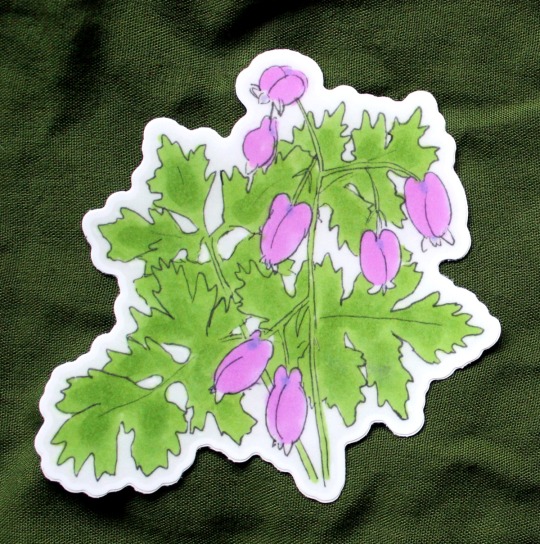
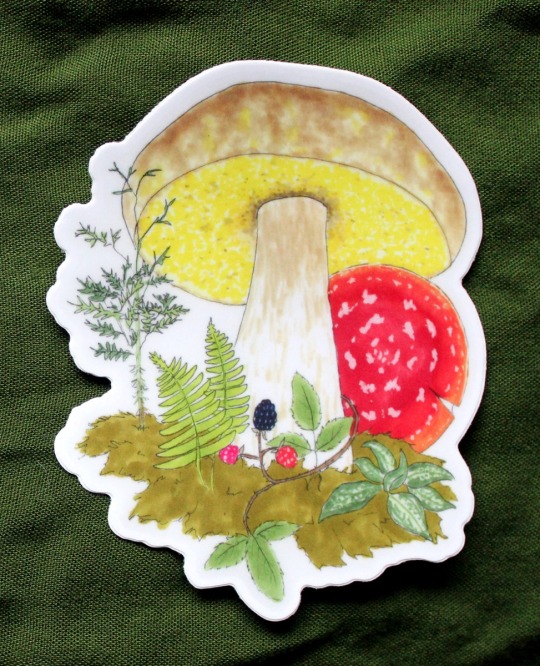
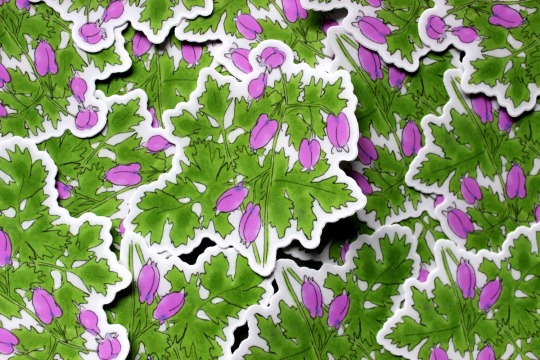
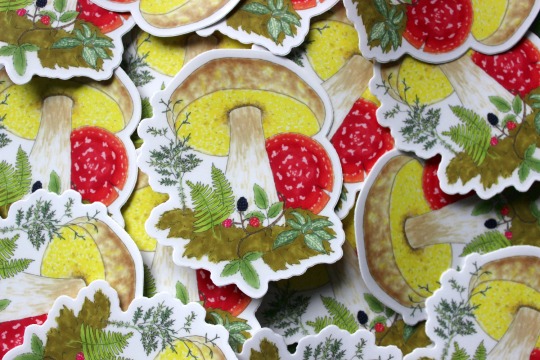
Hey, I just put a couple more sticker designs on Etsy! One is a portrait of Pacific bleeding heart (Dicentra formosa), one of my favorite native wildflowers here in the PNW. The other features an array of fungi and plants, to include king bolete (Boletus edulis), fly agaric (Amanita muscaria), western hemlock (Tsuga heterophylla), trailing blackberry (Rubus ursinus), western sword fern (Polystichum munitum), and western rattlesnake orchid (Goodyera oblongifolia).
You can find them, along with all of my nature-themed stickers at https://www.etsy.com/shop/thegreenwolf?section_id=43697433
#nature#stickers#mushrooms#fungus#fungi#flowers#wildflowers#plants#PNW#Pacific Northwest#native plants#cottagecore#naturecore#nature aesthetic#fly agaric#Amanita muscaria#boletes#ferns#bleeding heart#orchids#moss#forest
9 notes
·
View notes
Text
New species I’m getting this year!
Antennaria rosea (Rosy pussytoes)
Arisaema dracontium (Green dragon)
Asplenium scolopendrium (Hart’s tongue)
Calycanthus floridus (Sweetshrub)
Carex aurea (Golden sedge)
Claytonia virginica (Fairy spuds)
Echinacea pallida (Pale purple coneflower)
Equisetum hyemale (Scouring rush)
Iris setosa (Bristle-pointed iris)
Linnaea borealis (Twinflower)
Lonicera canadensis (Canadian fly honeysuckle)
Lonicera involucrata (Twinberry honeysuckle)
Osmunda claytoniana (Interrupted fern)
Passiflora incarnata (Maypop)
Pediomeleum esculentum/Psoralea esculenta (Breadroot)
Polystichum munitum (Western sword fern)
Triglochin maritma (Seaside arrowgrass)
Vaccinium macrocarpon (Large cranberry)
Viburnum acerifolium (Maple-leaved viburnum)
Viola pedata var. bicolor (Crowfoot violet)
Species I’m trying again this year after failed past attempt(s)!
Antennaria neglecta (Field pussytoes) Was planted in late summer and I was kept from watering it adequately.
Argentina anserina (Silverweed) No idea why they didn’t survive where I put them, but try, try again, elsewhere this time.
Artemisia frigida (Fringed sagebrush) First time ended up being white sage brush instead; second time plug was on its last legs on arrival, died soon after.
Chamaenerion angustifolium (Fireweed) Going to try this in yet another spot.
Dennstaedtia punctiloba (Hay-scented fern) Supposed to be aggressive! Mine was not. Maybe the one I get this year.
Dioscorea villosa (Wild yam) Planted the tuber but it never came up.
Glycyrrhiza lepidota (Wild licorice) Squirrels...Dug it up and broke the stem.
Lupinus polyphyllus (Big-leaf lupine) Leafed out nicely for its first and second year and then just didn’t come up again after its second winter.
Maianthemum racemosum (False Solomon’s seal) Squirrels! Dug it up and broke the stem.
Pteridium aquilinum latiusculum (Western bracken fern) I put it in a dry shady spot, as recommended, and it died.
Rudbeckia hirta (Black-eyed Susan) SQUIRRELS!!! Dug it up and while I was visiting home and it dried out. Couldn’t revive it.
Silene acaulis (Moss campion) Sunny, wet, amongst rocks. Check, check, check, but they keep dying on me.
Sisyrinchium montanum (Blue-eyed grass) Two places tried, two place died. I shall try a third place this year.
Viola pubescens (Downy yellow violet) FUCKING. SQUIRRELS. Dug it up while I was at work and left it to scorch and dry out in the sun. Couldn’t revive it.
Species I’m getting again because I’m fairly sure mine didn’t make it
Apocynum cannabinum (Hemp dogbane) It might not have gotten enough sunlight thanks to the white mulberry that grew over. I’ll try it in a different area.
Sagittaria latifolia (Duck potato) It may come up after all but I don’t want to take the chance of planting too late if it doesn’t.
Sparganium americanum (American bur-reed) Not sure why, but we’ll try again this year. And I may yet be surprised.
Symplocarpus foetidus (Skunk cabbage) It’s possible it’s just young and takes longer to come up than it would if it were more mature, but I don’t want to take chances since there’s only one place I can get them at.
11 notes
·
View notes
Text
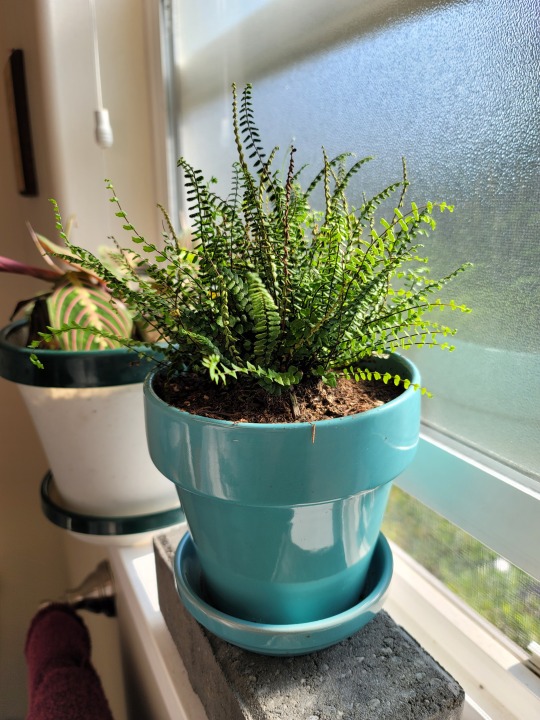
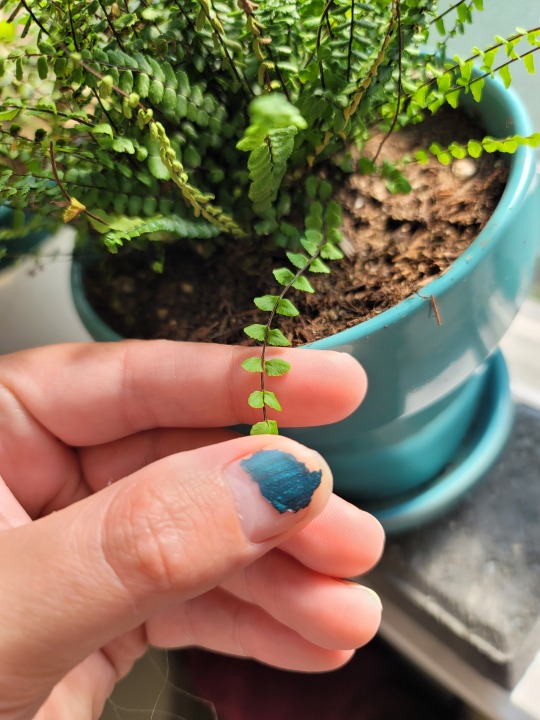
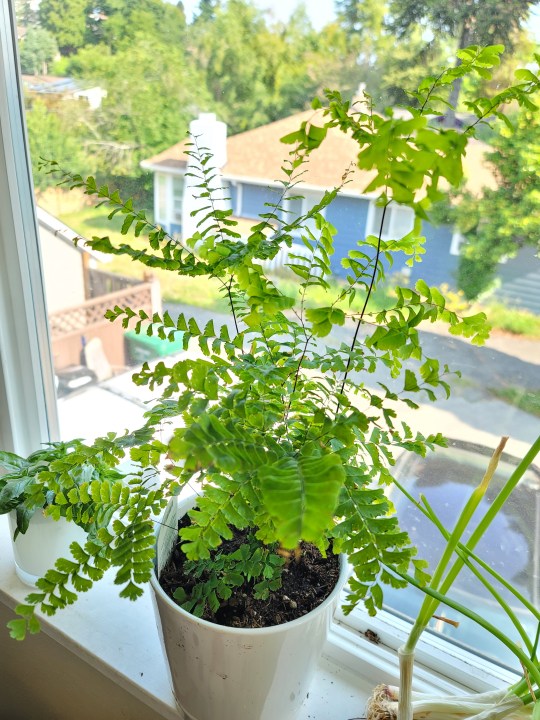
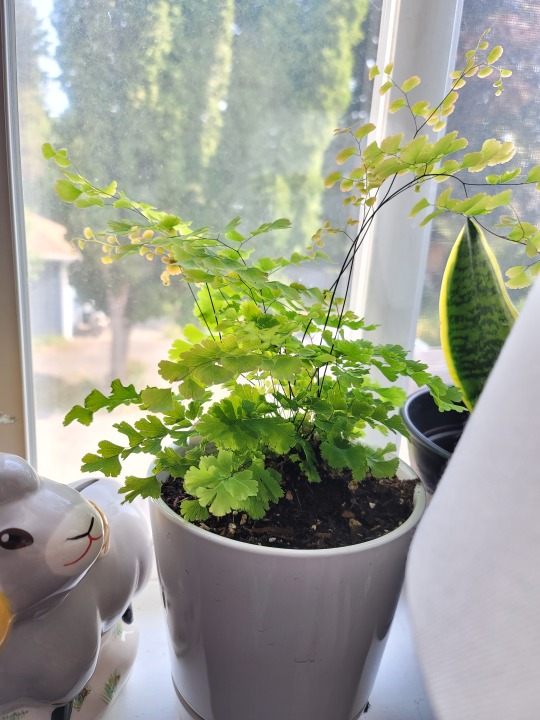

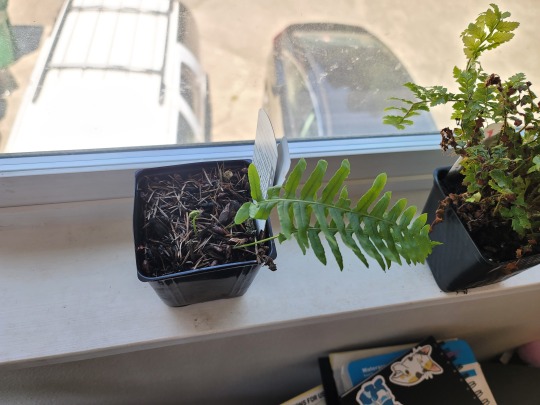


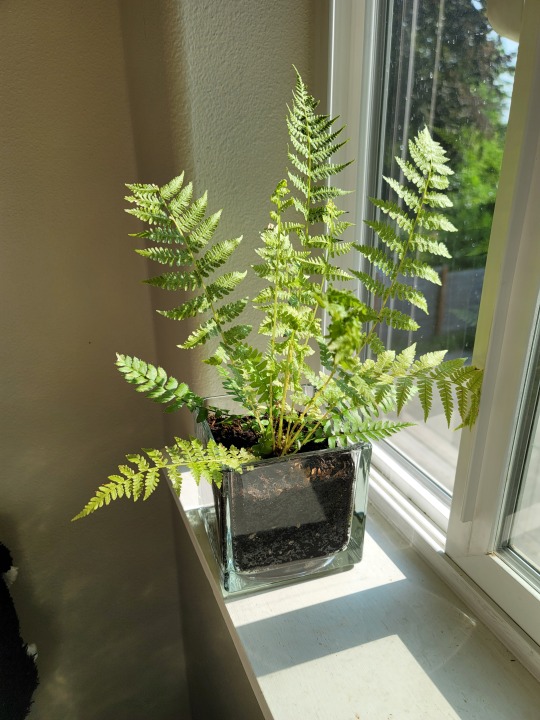

SLAPS THE TABLE ALRIGHT LISTEN UP Ferns are one of the most majestic creatures on this earth. They're older than dirt and some of them slowly give you cancer just by being in their MERE PRESENCE. The spores can be fatal as they are delicate and there's so many fucking variety's whose young fiddleheads are delicious to eat. Many have medicinal properties that are neat! Houseplant social media will tell you it's hard to grow them but fuck you I live in Seattle, we wine and dine in the under story of temperate rain-forests so I grow them like weeds in any east-north facing window that gets licks of sunlight and a full view of the sky Here's my growing collection of these marvelous creatures, I've only killed one (remember you always painted fern) and Ill probably accidentally kill a few more in pursuit of the perfect habitat but until THEN (ALSO YES MY NAILS IK IK LETS STICK TO WHATS IMPORTANT HERE) I prefer growing local varieties to north America and the PNW because that's where I'm located and it's just easier dude© but I'm not above buying Asian or European varieties if the photos upload in the right order... WE HAVE The Maidenhair Spleenwort (Asplenium Trichomanes) which is confusingly NOT the same genus as my latter Maidenhair ferns.. it just looks like it is. It's classed as a miniature fern and boy is it fucking -adorable-, I plan to propagate them into lil moss terrariums. Its been used as a diuretic and cough suppressant so idk if u got the flu and a piss fascination this fern is for you Next up is the Northern Maidenhair Fern (Adiantum Pedatum) and I love them, I would die for them, the delicate way they flit around in the gentlest breeze tickles the cockles of my heart. It's like looking at my gf on a summer day, ideal. Copypaste from OSU "Medical uses around the world for this plant has included bronchitis, whooping cough, chronic infections, hepatitis, snakebites, rheumatism, asthma, coughing, fevers, burns, and scalds. North Americans would chew the fronds and then apply them to wounds to stop bleeding."
Okay okay, ikik, so many maidenhairs but I can't help myself. What was I to do? this next one Adiantum hispidulum or, the 5 finger jack is from Australia, New zealand, and polynesia. It's got rosy colored young growth and more clover-like fronds. Couldnt find any specific medicinal uses I just like the cut of their jib So anyways I buy this next fern right, and the tag tells me 'ay, buddy, I'm an august fern' and for weeks I'm wondering where's the pretty orange streak? wheres the lil splash, why does the variegation look so different... well its NOT the marvel I thought it was! It's an East Indian Holly Fern! (Arachniodes Simplicior) and it's spores become big enough clusters they look like a bunch of baby spider nests! How neat! or terrifying, given your opinion on arachnids ig The next three pictures are of a Licorice fern, a Tassel fern, and an unknown variety I was given for free because it was unmarked and overwatered! The other two I bought from the clearance bin. They look rough, they look like they've been through the ringer, but I bet u a few months in one of my windows and all of em will have new fiddleheads and look happy as can be, give em a year and you'd never know they struggled. Kinda like people you love, treat em right and give em time, they'll probably start perking up too. I was explicitly excited about seeing the licorice fern as it's PNW native. The rhizomes are sweet and "..were chewed by numerous Native American groups, including the Squamish, Shishalh, Comox, Nuxalk, Haida, and Kwakwaka'wakw. The rhizomes were also usually used medicinally as a treatment for the cold and sore throats." FINALLY we got ourselves a Little lady fern (Athyrium filix-femina) and what is probably a Western sword fern (Polystichum munitum). We pulled them out of the ground and split them off, accidentally taking rhizomes from both plants on accident! They don't seem to mind and have different growth habits so hey, why not
congrats if you made it this far, cheers to ferns
#forest ferns#ferns#littleferns#bigferns#sleepinginferns#baskinginferns#shadyplants#PNW#Girls#maidenhair fern#native plants#indoor plants#house plants#Mylifeisonlyplants
5 notes
·
View notes
Photo
-english ivy (Hedra helix)
-western redcedar (Thuja plicata)
-sword fern (Polystichum munitum)
-western hemlock (Tsuga heterophylla)
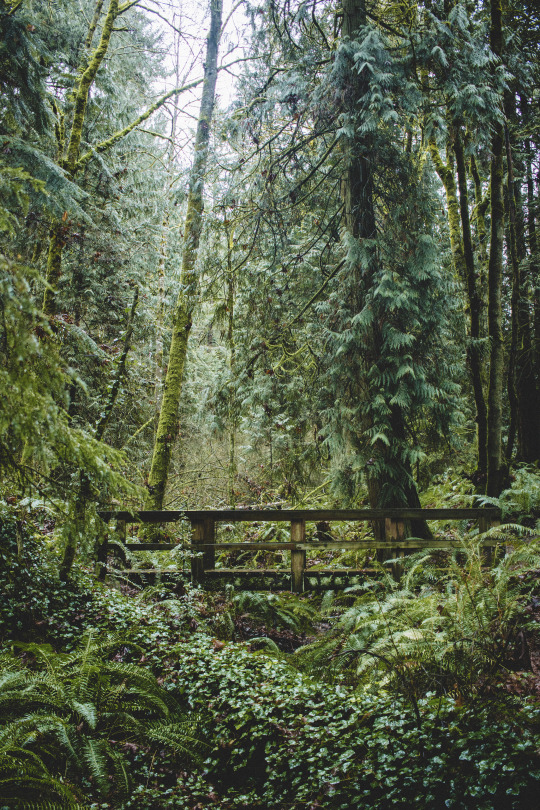
23K notes
·
View notes
Text

photo copyright ©️ Lawrence Smith
2 notes
·
View notes
Text
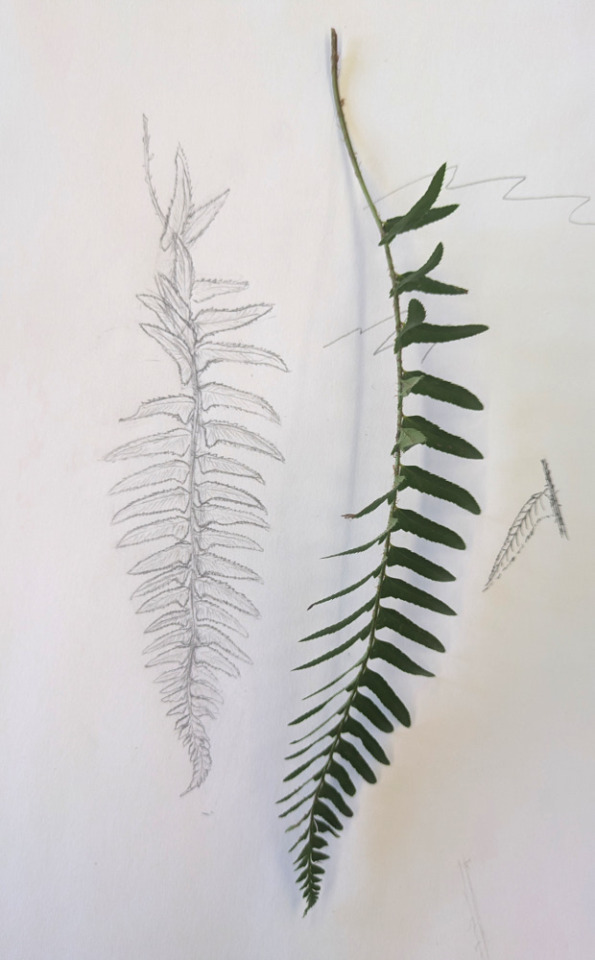

It has been a few years since I took a botanical illustration class. Since my winter semester is lighter on teaching and other activities than the rest of the year, I had been considering registering for the botanical illustration class through Portland Community College's Community Ed program (who I also teach for!) My partner insisted on paying for it for my Christmas present, so who was I to say no?
This morning was the first class--and we got to draw ferns! Specifically fronds of western sword fern (Polystichum munitum), one of the most common native ferns in the Pacific Northwest. I am a very slow artist, so what you see on the paper is the result of two and a half hours of work, a large portion of it spent just trying to get the individual leaflets right. And of course the shapes of everything changed as the frond began to dry out and distort, so that was an additional challenge. There were a bunch of times where I felt pretty frustrated, but I worked through them, and now that I look at what I drew today I feel much better about it. Sometimes it just takes a little bit of distance to appreciate something better.
I was talking with other students about the difference between examining a plant in detail to try to identify it, and to try to draw it. With the former, I'm attempting to verbally describe what makes this plant different from a similar one, whereas the latter requires me to depict its uniqueness through the lines I draw with my pencil. Even though the sensory input is the same, the parts of my brain that I'm engaging differ, as do the ways in which my brain communicates with my hands. It's been a really good exercise, and I wish I had more time to draw outside of these occasional classes. But I appreciate that I get to have this experience now, over the next few weeks.
#drawing#art#botanical illustration#botanical art#fern#ferns#sword fern#plants#native plants#fronds#nature#nature art#naturecore
48 notes
·
View notes
Text
-Western redcedar (Thuja plicata)
Douglas fir (Pseudosuga menziesii)
-Sword fern (Polystichum munitum)
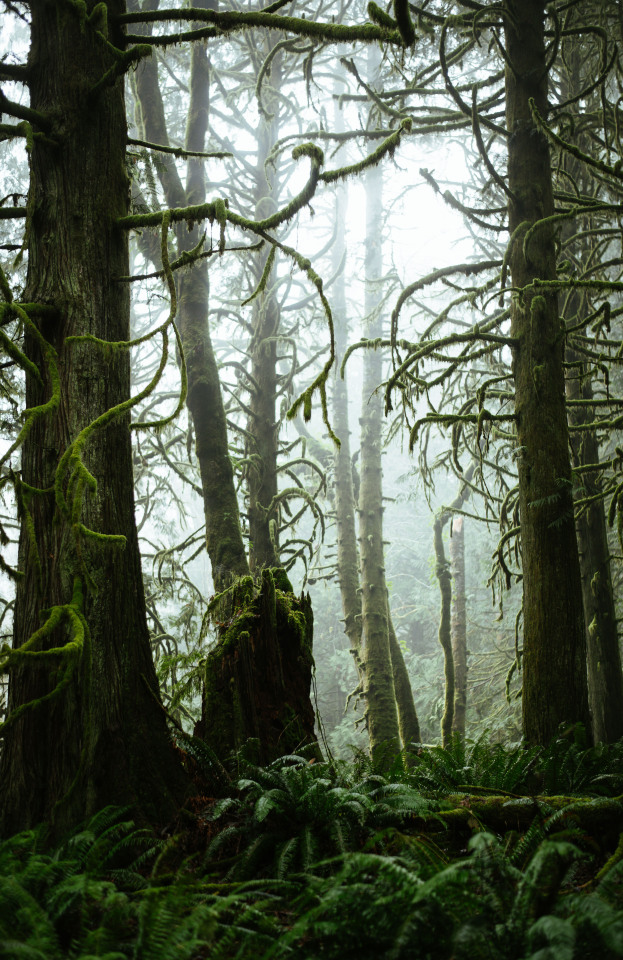
Mossy cathedral
8K notes
·
View notes
Text

PLANTOBER # 14 SWORDFERN
Swordfern is part of the large fern family of plants. These plants just went "yeah, all is good, no need to do much adaptation", so for 420 million years they did little to do any wild adaptations, mostly just being smaller plants, pretending being trees, and all of that. I'd love to actually write something smart, but this probably the wildest and most detailed family of plants, so will yet again gloss a bit…
So the swordfern is Polystichum munitum, the western swordfern. This plant is native to the western of the North America, but it does grow from up in Canada to the Mexico and even deeper south. This plant got naturalized into regions of Great Britain and Ireland, and from those regions, it did get exported even further.
Plants grow reaching up to 1.8 meters, creating lush, rich, spreading individual specimens, joined in groups.
Swordferns are exported to the global market, and are mostly used as a standalone plants, parts of gardens or cut and added to the floral compositions or bouqets.
In Poland, and all Eastern-slavic nations, there's a myth that during the Summer Solstice, if you manage to find the mythical flower of the fern, you will experience luck and riches. Ferns do not bear flowers.
A lot of people DO BELIEVE they do…
Even if the myths aren't directly related to swordferns, I wanted to enrich the narration for the ferns in general. These beautiful plants instantly remind me of the virgin and wild forests, so my hope is that they will, in a curious way, remind you as well of the calm that comes from the natural, wood terrains. That's how I feel about ferns in general… 😅
As always, thank you so much for taking a look at my art! Leaving a like, comment or sharing means a ton to me, and is more than appreciated! 🤗
Tools: pencil, ink, watercolor and watercolor crayons, white gel pen, white ink.
My socials: https://keik-keik.carrd.co
#cara#inktober#plantober#traditional media#watercolour art#goblin girl#ink#plantober2024#traditional art#fern#swordfern
0 notes
Text
Here we have Polystichum munitum in the POLYPODIACEAE family. Commonly, it is known as sword fern!
This evergreen fern can be identified by its pinnately compound leaves with alternate, serrated, dagger-shaped leaflets. It has spores year round in 2 parallel rows on the underside of its leaflets.
Polystichum munitum is native to the Western United States and Canada in moist coniferous forests. It reproduces via spores dispersed by wind and water. It can resprout from rhizomes, allowing for recovery from fire. Its fronds also allow for great shade tolerance, conserving of nutrients, and preservation of water.




0 notes